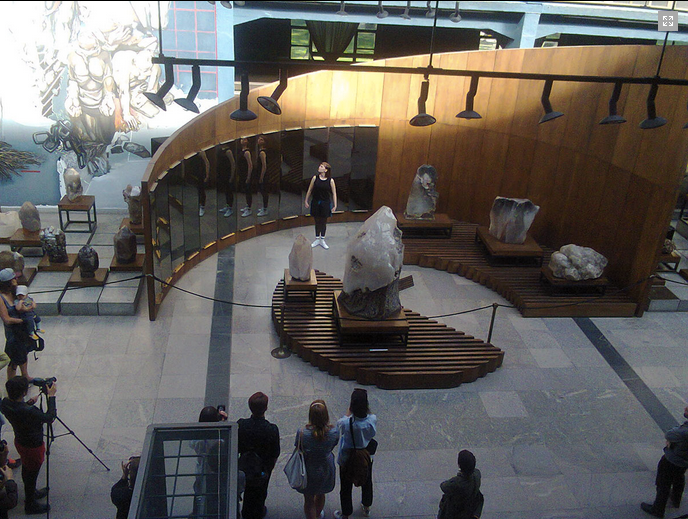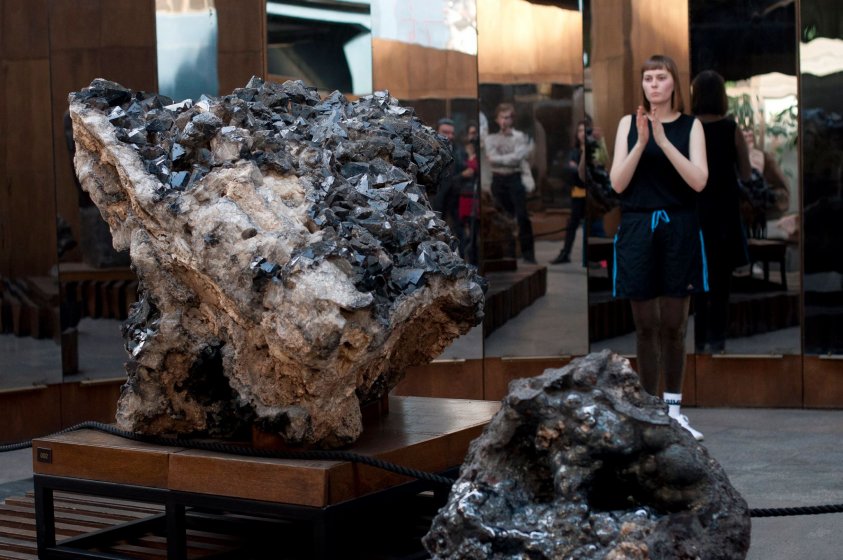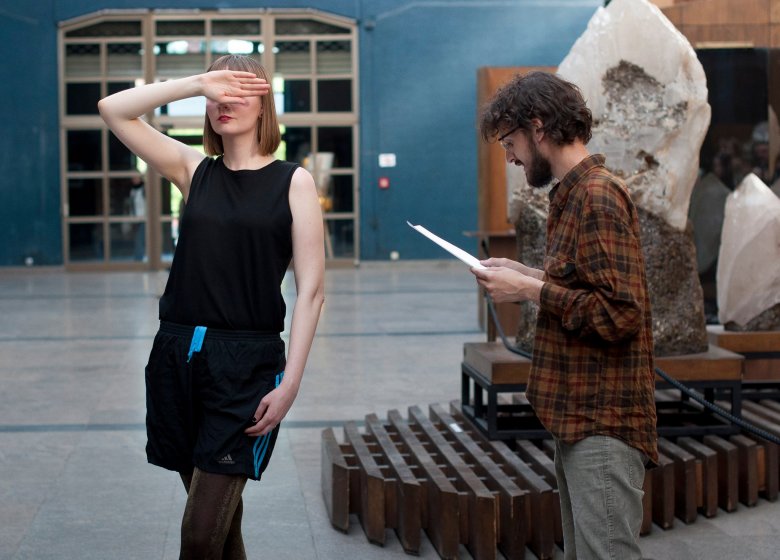Why the centre of Europe is really hard to pinpoint
performance and a guided tour
2015-2016
The performance explores the notions of self-exoticism and post-colonialism, state mythologies and power in the case of post-communist terrain. Eastern Europe could be called the ‘inner Other’ of Europe. After the collapse of the USSR and the end of the Cold War, EU still maintains systems of dominance and control (economical, political, cultural) and structures of inclusion and exclusion. At the same time, the translation of post-colonial discourses to the post-communist condition, in relation to both Russian imperial political history and the contemporary Western European politics, has been problematic.
Exhibiting oneself ‘as a Belarusian’ in the historical or ethnographic museum the artist attempts to challenge the stereotypes and the exoticising gaze.
Explicitly representing oneself as a museum object and the Other, she addresses the spectator's pleasure. At the same time referring to the Judith Butler’s concept of performativity she articulates the process of identity formation through exaggeration and repetition, effort and technique, balancing between spectacularity and boredom. She strives to introduce estrangement and defamiliarisation, not only to the audience but also to oneself.
Performing a Belarusian I am forced to establish my identity when the state or migration regimes interpellate me.
However playing with exoticism one need to ask – what does it mean to be in control of one’s representation? Who can represent whom? Am I not falling into a ‘postcolonial exotic’ – a displacement of multiplicity of lived experiences? And is it enough to reveal these mechanisms to challenge them?


